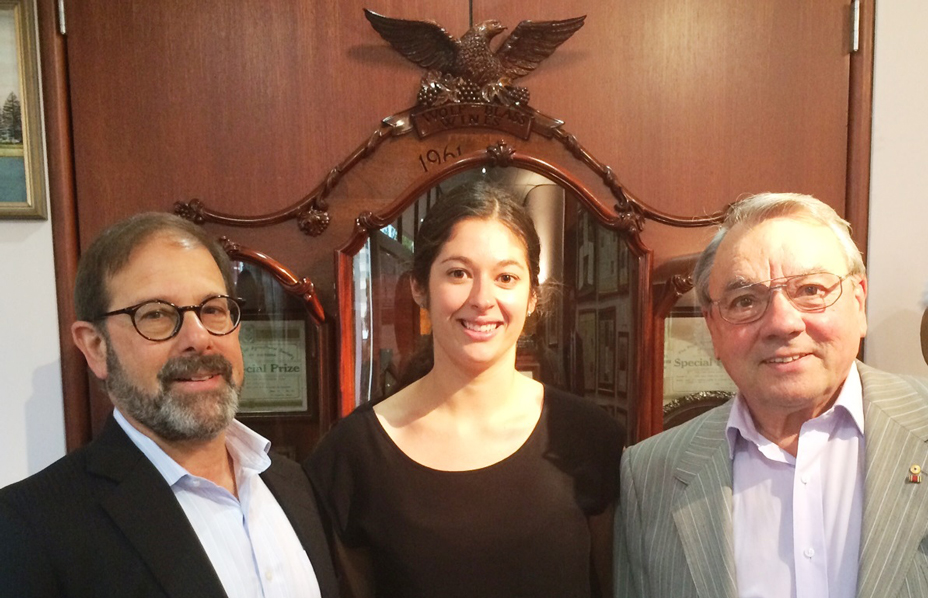
Professor of Wine Marketing, Larry Lockshin, scholarship recipient Anne-Marie Manno and Wolfgang Blass.
In the ever-changing wine retail landscape, competition is fierce. Limited shelf space means brands are constantly fighting for prime position, with stockists holding all the cards as they decide the fate of when and where a brand is stocked in-store.
Typically, the more profitable the brand, the more likely it will hold a good shelf position. But when you’re looking at an Australian market of over 10,000 different wine brands (excluding imports), the complexity of the wine retailer’s decision becomes all the more obvious.
So how does a wine retailer determine the actual value of a brand? It’s a question that UniSA Masters student Ann-Marie Azzurro has tackled as part her wine marketing research with the Ehrenberg-Bass Institute for Marketing Science, under the Wolf Blass Foundation Scholarship.
As the first recipient of this world-first scholarship, Azzurro assessed the value of a brand in the stocking and replacement process among wine retailers, with the ultimate goal of helping small wineries better understand where to spend their investment dollars.
“Until now, no one has looked at the process that wine retailers undertake in order to stock wine on the shelves, let alone the factors that they consider to be important,” Azzurro says.
“Should they be promoting themselves as a brand or as a variety? Should they be leveraging their local region? Or should they be building relationships with venues or tourism outlets?
“Understanding these factors will help wine producers tailor their brand building activities and sales pitches to retailers. And by emphasising what retailers want, they are more likely to secure a wider and more prominent distribution.”
Azzurro’s research found the key factors that drive product acceptance among wine retailer are taste, price, shelf space availability, supplier terms, variety, label and the region of the wine. Interestingly, wine retailers do not base all of their stocking decisions on how wine consumers behave.
“Taste was found to be the most important factor for retailers, as this is what sells a bottle of wine and encourages repeat purchases. But price and branding were also significant decision-making factors,” says Azzurro.
“Ultimately, for a wine to be stocked, it needs to over deliver on both price and taste, with a well-known brand being slightly favoured over a lesser-known brand.
“When replacing well-known brands, retailers will either wait for the new range to come out, or replace it with another well-known brand in the same price-point.
“In the case of lesser-known brands, they’ll either replace it with a product from the same region at the same price, or not replace it at all.”
With the help of the Wolf Blass Scholarship, Azzurro’s research will enhance wine producers’ likelihoods of being stocked and sold in store, helping them stand out among an ever-growing pool of brands.
“I love that I’m able to help wine producers who are trying to break into the market,” Azzurro says.
“Being able to support and develop knowledge in the wine industry in South Australia is really rewarding.
“I’m so pleased I had the chance to achieve this through the Wolf Blass Scholarship, and that my learnings from this research are really making a difference.”
Applications for the 2018 Wolf Blass Scholarship are open until 31 October. For more information about the scholarship, visit the scholarship page.